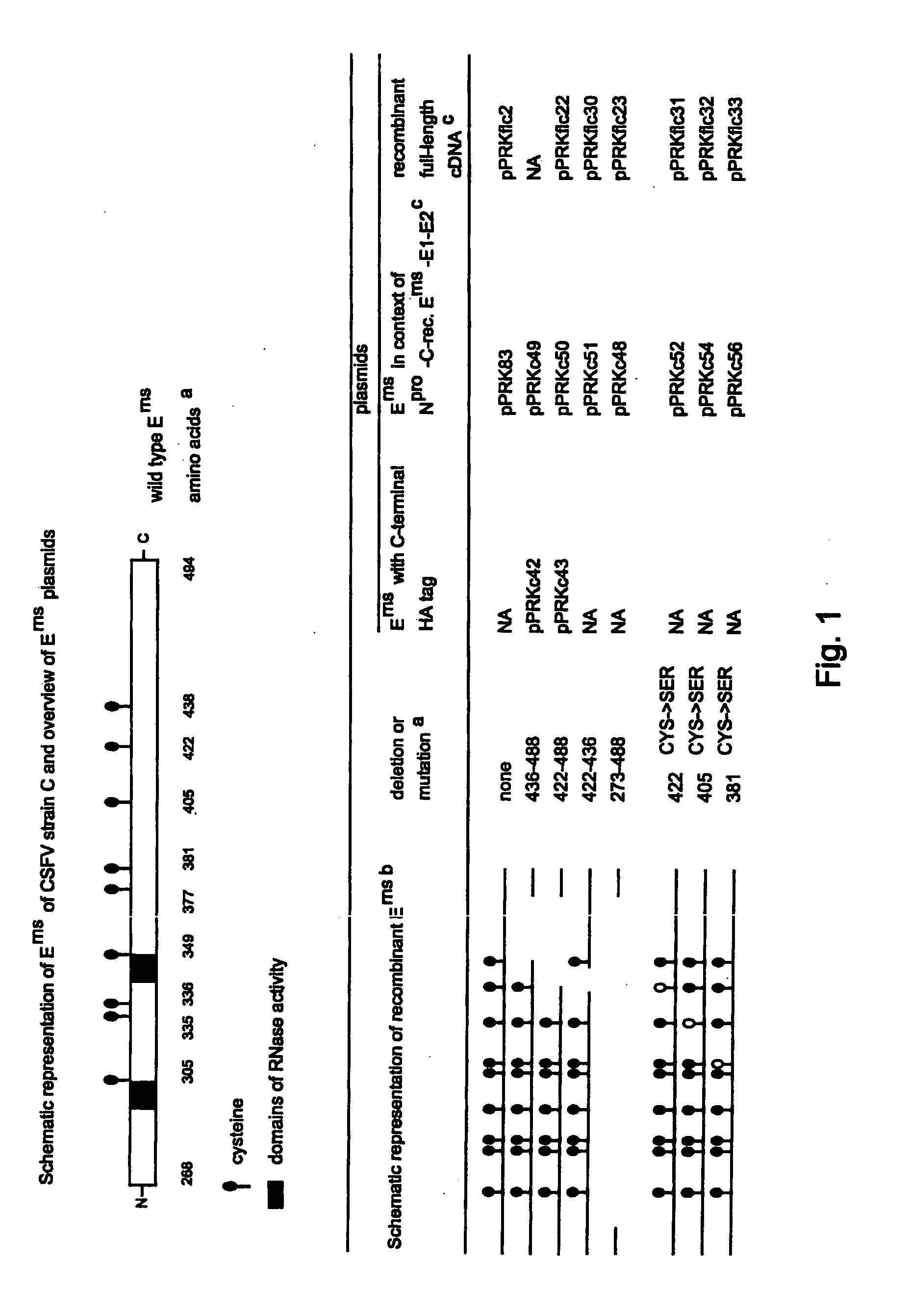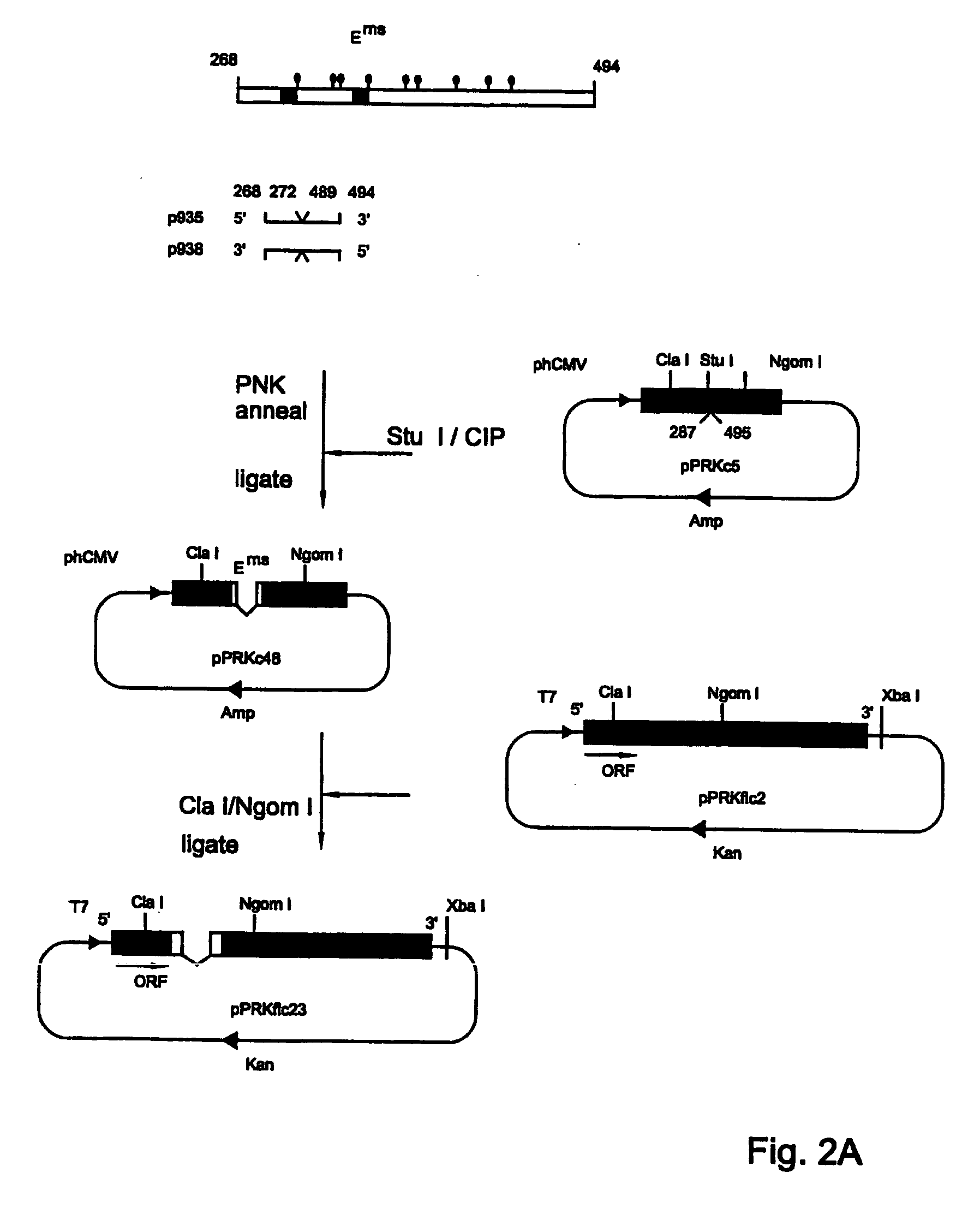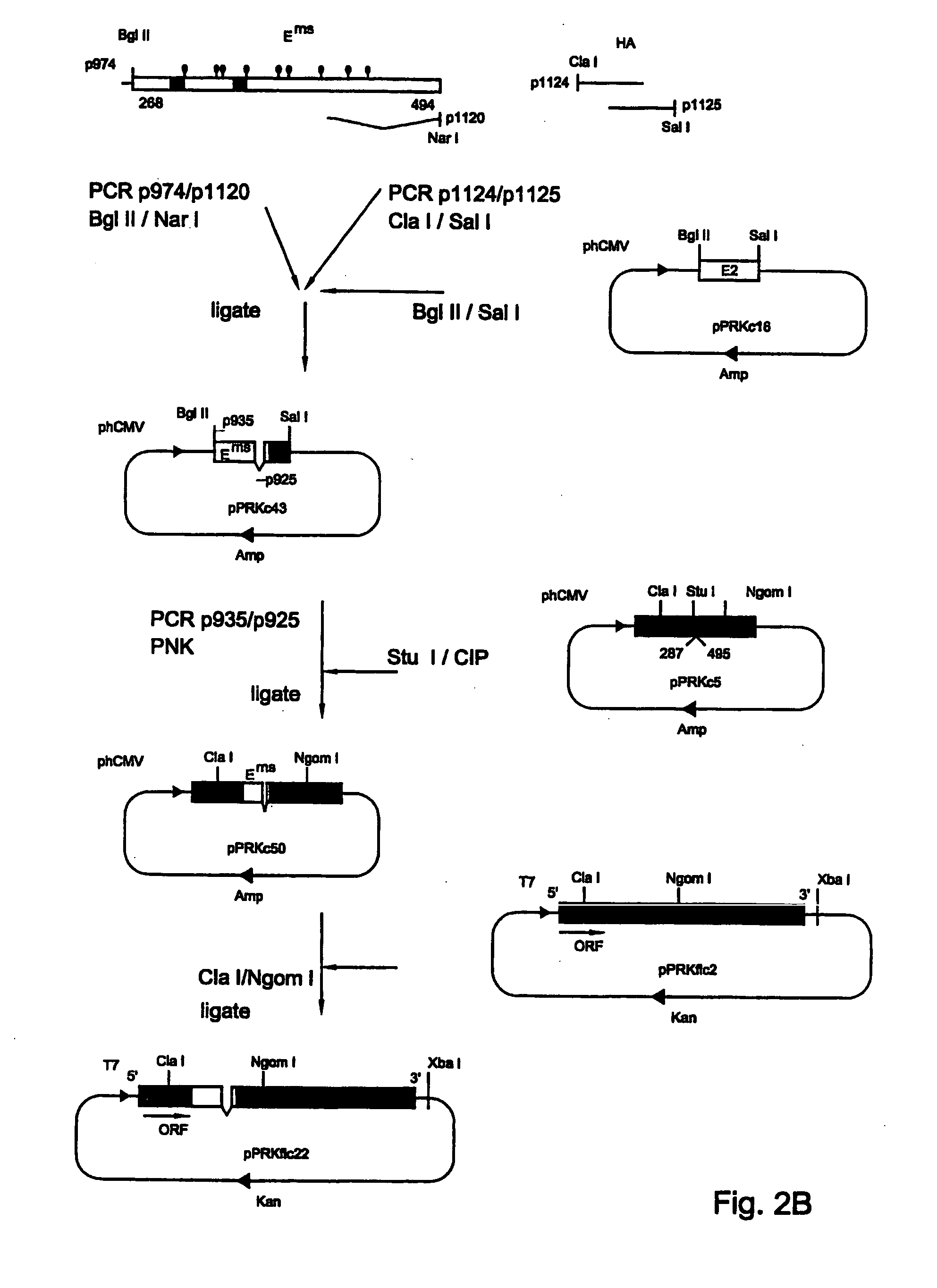Non-spreading pestivirus
a pestivirus and non-spreading technology, applied in the field of biotechnology, can solve the problems of inability to detect pestivirus, inability to detect serologically, and inability to carry out any clinical tests, and achieve the effect of avoiding the negative consequences of viral spread
- Summary
- Abstract
- Description
- Claims
- Application Information
AI Technical Summary
Benefits of technology
Problems solved by technology
Method used
Image
Examples
example 1
[0050] Construction and characterization of recombinant CSFV strains Flc22, Flc23, Flc30, Flc31, Flc32, and Flc33
Materials and Methods
Cells & Viruses
[0051] Swine kidney cells (SK6-M, EP 0 351 901 B1) were grown in Eagle's basal medium containing 5% fetal bovine serum, glutamine (0.3 mg / ml), and the antibiotics penicillin (200 U / ml), streptomycin (0.2 mg / ml), and mycostatin (100 U / ml). Fetal bovine serum was tested for the absence of BVDV and BDV antibodies as described previously (Moormann et al., 1990, Virology 177:184-198).
[0052] Recombinant CSFV strain C viruses Flc22, Flc23, FLc30, Flc3l, Flc32, and Flc33 were grown and prepared as described earlier (Moormann et al., 1996, J. Virol. 70:763-770) with a slight modification, the growth medium of SK6 cells was changed in supplemented Eagle's basal medium. Virus stocks were prepared by passaging the virus eight to ten times on SK6c26 cells. The obtained virus titers ranged from 5.0 to 5.8 TCID50 / ml.
Construction of a Stable SK...
example 2
[0101] Construction and characterization of recombinant CSFV strains Flc4 and Flc47
Materials and Methods
Cells & Viruses
[0102] Swine kidney cells (SK6-M, EP 0 351 901 B1) were grown in Eagle's basal medium containing 5% fetal bovine serum, glutamine (0.3 mg / ml), and the antibiotics penicillin (200 U / ml), streptomycin (0.2 mg / ml), and mycostatin (100 U / ml). Fetal bovine serum was tested for the absence of BVDV and BDV antibodies as described previously (Moormann et al., 1990, Virology 177:184-198).
[0103] Recombinant CSFV strain C viruses Flc4 and Flc47 were grown and prepared as described earlier (Moormann et al., 1996, J. Virol. 70:763-770) with a slight modification; the growth medium of SK6 cells was changed in supplemented Eagle's basal medium. Virus stocks were prepared by passaging the virus five to ten times on SK6b2 cells. The obtained virus titers ranged from 3.5-4.5 TCID50 / ml.
Construction of a Stable SK6 Cell Line Expressing E2
[0104] Plasmid pPRb2 contains the E2 ge...
example 3
Animal Experiment: 298-47042-00 / 98-06
[0121] Pigs vaccinated with Flc22 and Flc23 are protected against a lethal challenge with virulent CSFV strain Brescia
Materials and Methods
Animals
[0122] Pigs of 6-7 weeks of age from conventional sows were obtained. Pigs were randomly divided in groups and housed in separate stables of the high-containment facilities of ID-DLO. The animals were fed once a day, in a trough, with complete food pellets, and could drink water from a nipple ad libitum.
Vaccination and Challenge
[0123] The pigs were divided into two groups of 2 pigs. The pigs in group A were vaccinated with strain Flc23; the pigs in group B were vaccinated with strain Flc22. The pigs were vaccinated via several routes of inoculation. The pigs were sedated and placed on their backs before inoculation with a virus suspension (2 ml containing 105 TCID50 / ml) which was instilled dropwise into the nostrils. In addition, two milliliters of virus suspension was inoculated intravenously,...
PUM
| Property | Measurement | Unit |
|---|---|---|
| pH | aaaaa | aaaaa |
| thick | aaaaa | aaaaa |
| temperature | aaaaa | aaaaa |
Abstract
Description
Claims
Application Information
 Login to View More
Login to View More - R&D
- Intellectual Property
- Life Sciences
- Materials
- Tech Scout
- Unparalleled Data Quality
- Higher Quality Content
- 60% Fewer Hallucinations
Browse by: Latest US Patents, China's latest patents, Technical Efficacy Thesaurus, Application Domain, Technology Topic, Popular Technical Reports.
© 2025 PatSnap. All rights reserved.Legal|Privacy policy|Modern Slavery Act Transparency Statement|Sitemap|About US| Contact US: help@patsnap.com



